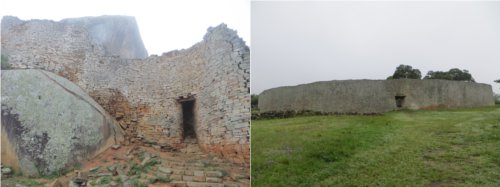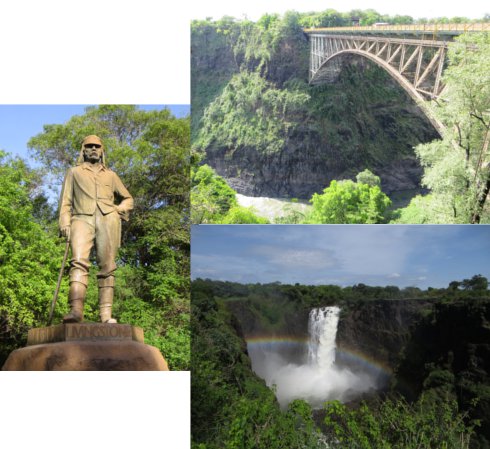Sights and Activities
Below are the places we saw and activities completed while visiting Zimbabwe:
Great Zimbabwe
Great Zimbabwe Ruins: the site is divided into three main areas we visited – the Hill Complex, the Valley, and the Great Enclosure. At the entrance of the complex, a museum exhibits the history and what life would have been in their times. It is believed that the Hill Complex was the first to be built in the 13th century, while the remainder was built over the following 100 years. The city grew into a powerful religious and political capital, and became the heart of Rozwi culture. By the 15th century, the growing population had depleted the local resources necessitating emigration to more productive lands. When the Portuguese arrived in the 16th century the city was deserted. We got lost exploring in the maze of enclosures in the Hill Complex. The area is full of rock formations that were frequently used as part of their structures. The Great Enclosure is thought to have served as a royal compound. The enclosure walls were built without any mortar or cement and rise 11 meters with up to 5 meters thick. The most peculiar construction in the Great Enclosure is the 10m-high Conical Tower, a solid structure that is believed to have significance of fertility. The Valley was composed of a series of enclosures and daga (traditional African round house) platforms. This is the area where the soapstone bird carvings were discovered and has now become the national symbol of Zimbabwe.

Bulawayo
National Art Gallery: we tried visiting this gallery, but it was closed for the holidays.
Natural History Museum: the museum’s exhibits included Zimbabwe’s natural, anthropological, and geological history.
Victoria Falls
Jafuta Heritage Centre: this small exhibition detailed the cultural heritage of local ethnic groups, from Shona, Ndebele, Tonga and Lozi people.
Victoria Falls National Park: we spent a few hours admiring one of the seven natural wonders of the world. The park has a pathway with many viewpoints of the falls. We got close enough that it felt as if it were raining and we got soaked! The last view is of Victoria Falls Bridge which leads into Zambia. The stunning falls has a height of 107m (351ft), a width of 1,737m (5,698ft), and an average volume of 1,100 m3/s (38,846 ft3/s).

